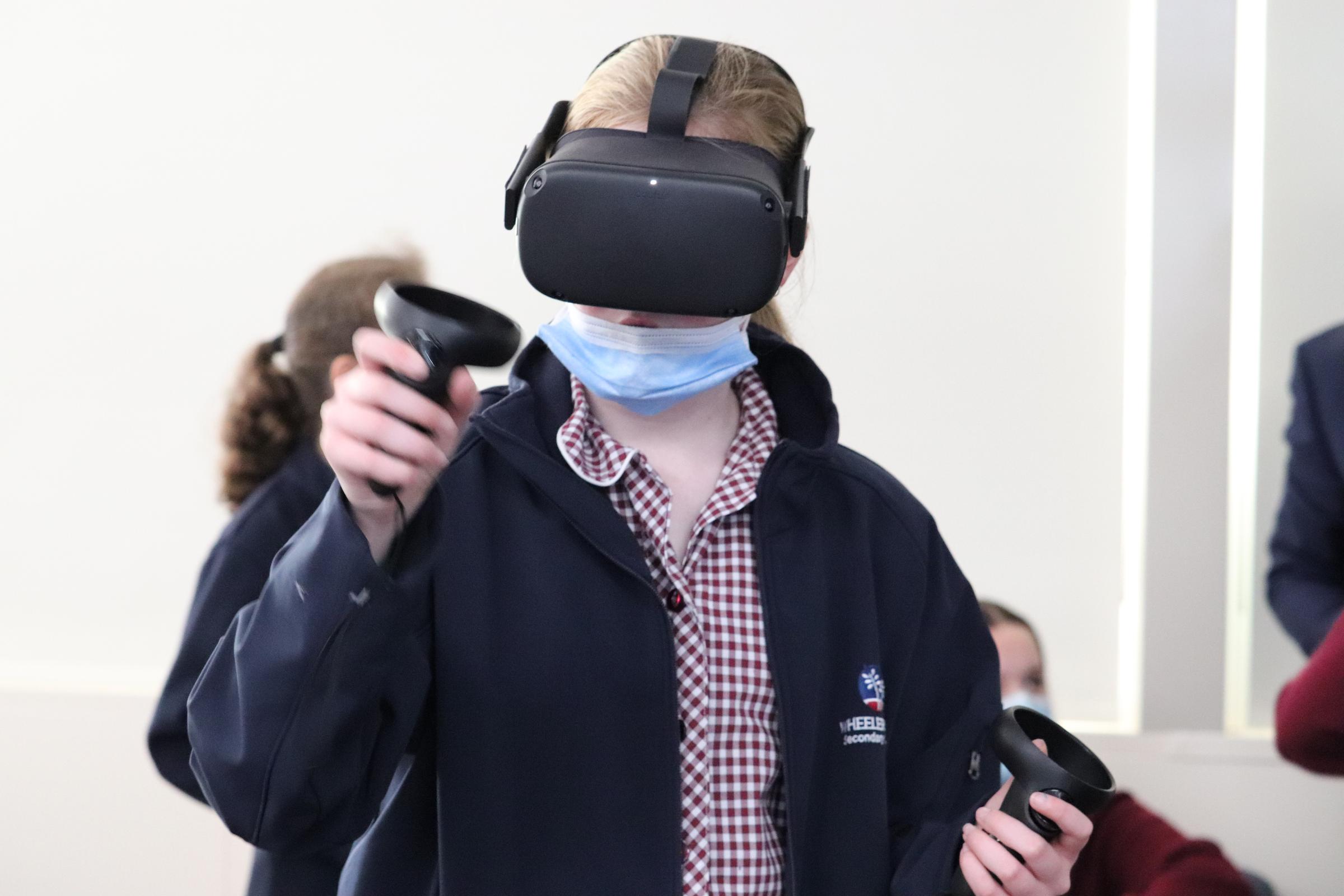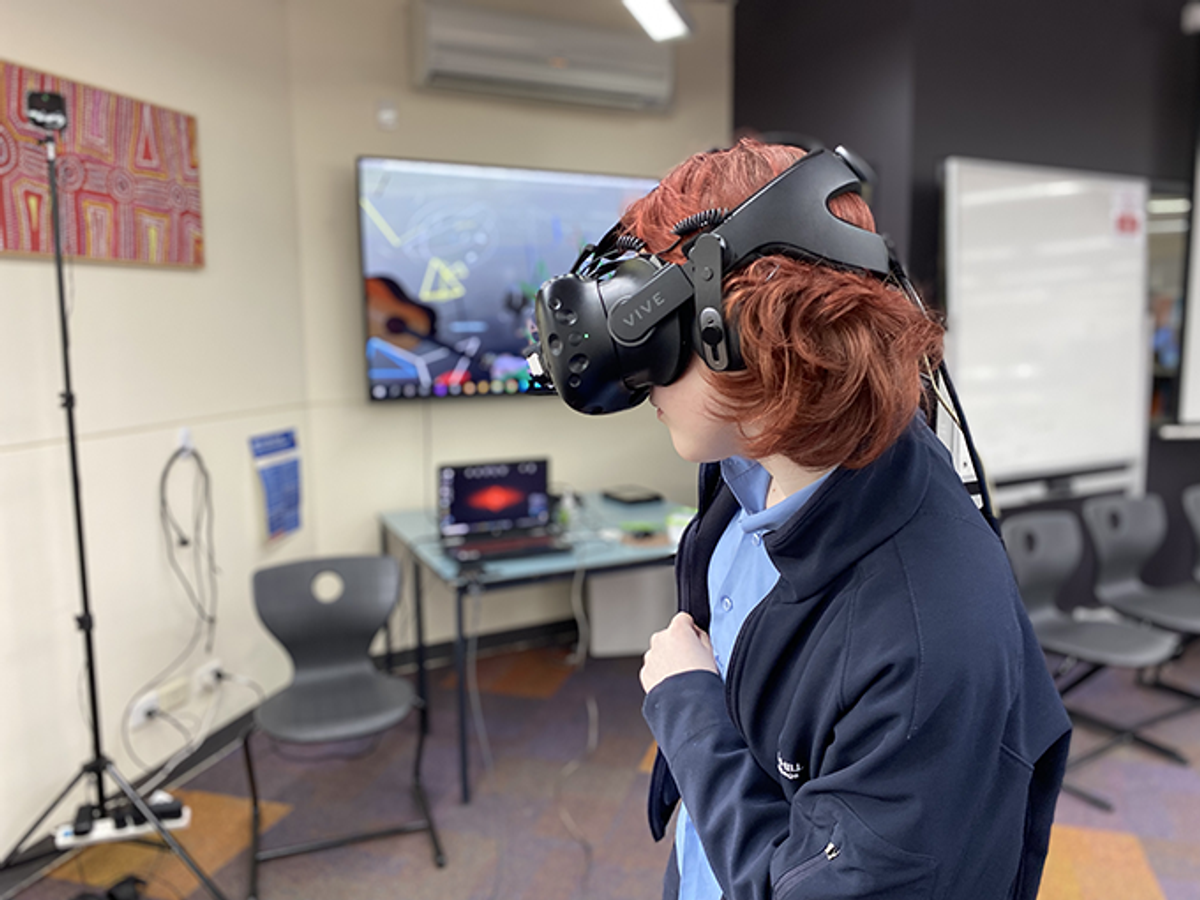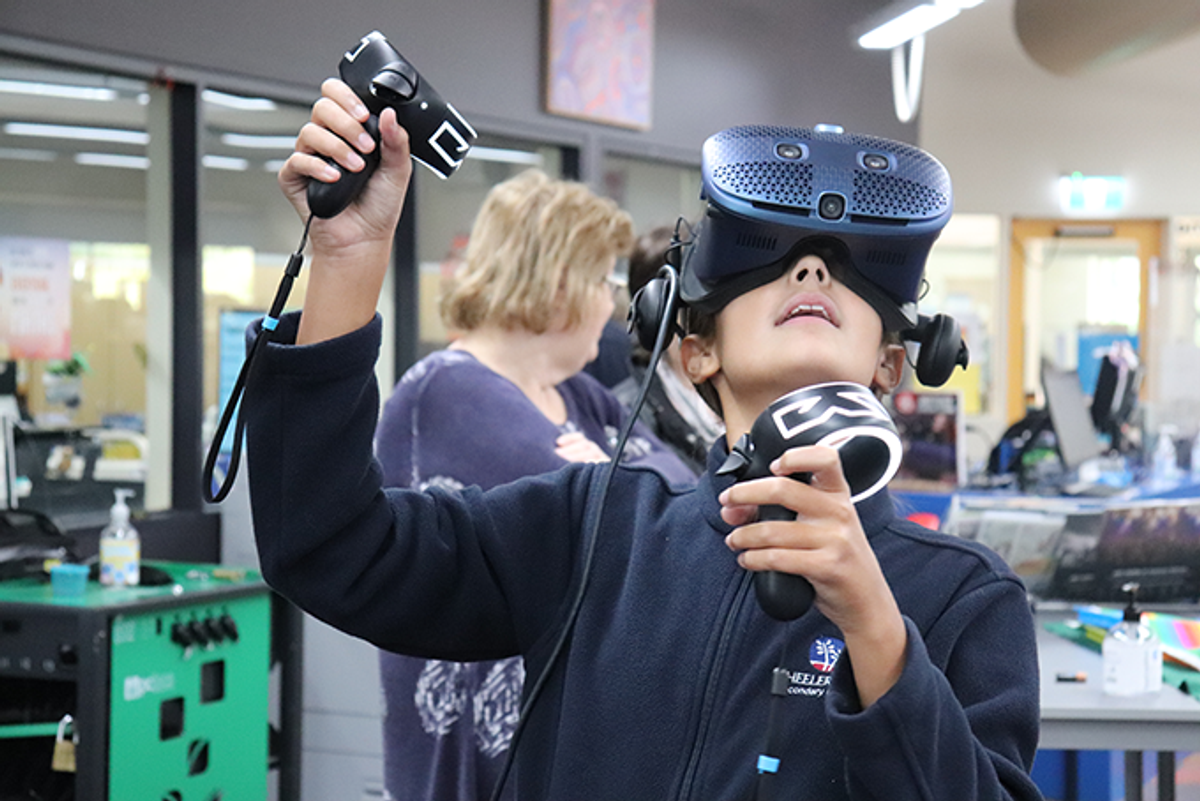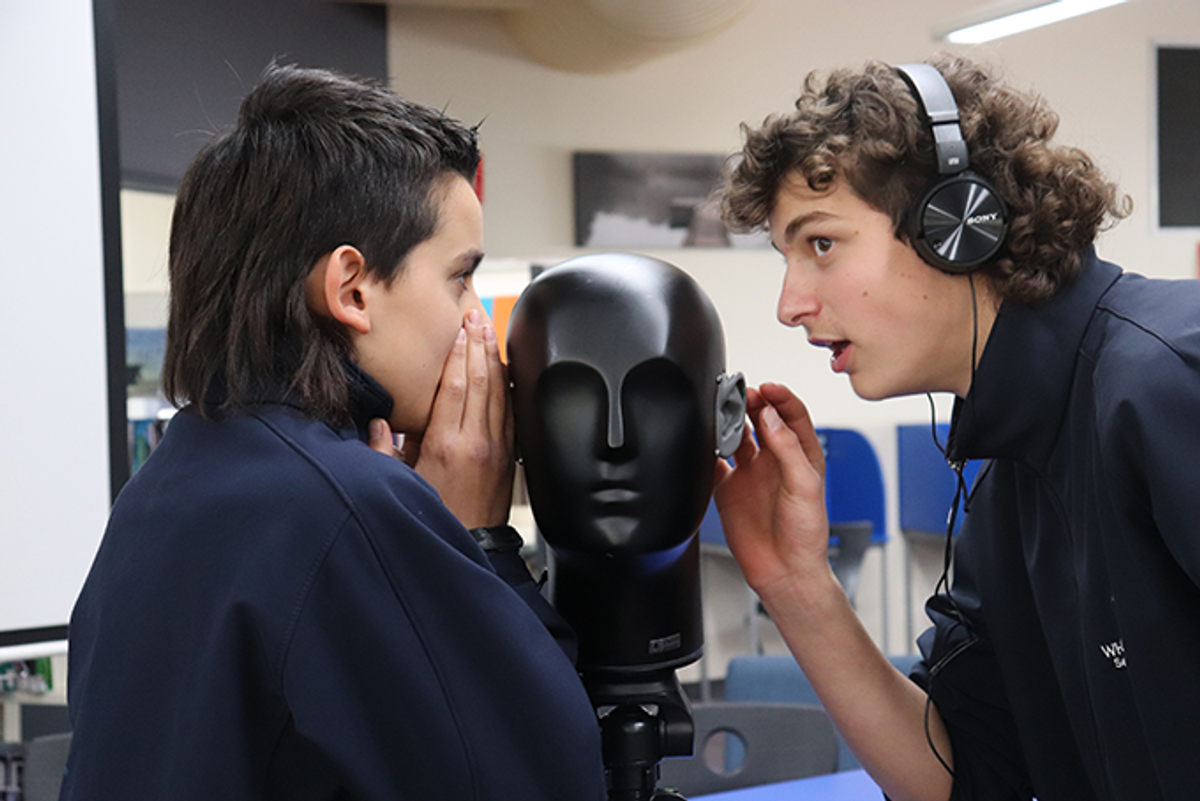WHSC CASE STUDY by Susannah Langley
'Creating Futures Together'

WHSC CASE STUDY by Susannah Langley
'Creating Futures Together'
In 2021 and 2022, we had the wonderful opportunity of working with artist Susannah Langley who worked with our students on creating artworks using Virtual Technology. Following is a case study she has since put together a of her experience using Virtual Reality in a school art setting.
School: Wheelers Hill Secondary College, Greater Metropolitan Melbourne, Victoria
Dates: 12 September – 7 November 2022, Term 3 & 4 weeks 10 & 1-5 respectively


Figure 1: Year 7 student exploring Virtual Keepsakey, an interactive artwork by Susannah Langley and Warren Armstrong at the VR EXPO, Wheelers Hill Secondary College 2022
Aim: Delivery of a practical, 5-week virtual reality program, facilitated by artists Susannah Langley and Warren Armstrong collaborating with students to co-create VR artworks of their own design and build skills in photogrammetry, sound recording and virtual world-making.
This classroom-based project was facilitated with the support of a core group of STEAM teachers led by Abbey Novak, STEM and Arts Programs Teaching Lead and delivered over 5 consecutive weeks, in 3 and term 4, over 3 days per week.
Delivery Structure and contact hours:
Course delivered to 140, Year 7 students, based on 6 classes /week during their Art & Design and digital tech timetable.
1 week @ I day/week - Expo introduction to VR technologies and equipment working with.
3 weeks @ 3 days/week – practical skill building in 3D scanning, drawing VR and sound.
1 week @ 1 day/week – Virtual world building with developer Warren Armstrong.
Plus – 1 week @ 3 days preparation time For consolidation of students' virtual assets and sound.


Figure 2: Students drawing in VR using HTC Vive Headset and Tilt Brush software, Wheelers Hill Secondary College, 2022
Workshop timeline:
Ideation – Week 1, A full-day program for 140 students, with 6 classes attending over 4 x 1 hour 10 mins blocks.
Here students are introduced to the various VR technologies and equipment they’ll be using over the next 5 weeks. Including VR drawing, spatial audio recorders and microphones, 3D scanners, photogrammetry, and interactive VR artworks. Students are invited to brainstorm ideas for the project theme.
Practical Session 1 – Week 2, Texture Wrapping, photogrammetry, 3D Scanners and VR drawing in Tilt Brush software
3 days on-site/week. Each class has 1 hour. 10 mins/week led by Susannah and a teaching member.
Here students are introduced to the overall project theme and object-based storytelling. They break into groups to brainstorm ideas for objects that might encompass their ideas. Students experiment with using different 3D scanning techniques and technologies to create virtual objects including making texture-wrapped objects using photoshop or hand drawing onto templates.
Practical Session 2 – Week 3, Full practical class where students in their groups work with Photogrammetry, 3D scanning equipment and the texture wrapping processes to scan their objects and create VR assets for their virtual worlds.
Throughout these sessions students explore drawing in VR; are given step-by-step instructions in handling the professional technologies; and are encouraged to experiment, try different tools, ask questions and problem-solve as a team.
Practical Session 3 – Week 4, Full practical class where students focus on creating audio recordings and listening/choosing sounds to accompany their assets in the virtual worlds.
Students are introduced and shown how to use field recording equipment and a range of microphones. Together in groups, they write a description to describe their object and theme. Students are introduced to the website freesound.org a catalogue of pre-recorded soundscapes they might choose to use with appropriate acknowledgements.
Virtual World building Session 4 - Consolidation class led by developer Warren Armstrong who provides a tutorial and guided class in virtual world-building. A double period class with students of 2 hours 20 minutes contact time.
Here students work in their groups on an exercise and are shown how to place their virtual assets and sounds in Mozilla Hubs' virtual environment. Warren provides step-by-step instructions to teaching staff and students. Due to the range of capabilities and learning styles in a class, it is preferable to split these sessions over 2 full days with double the ratio of teacher-student support.
3 Days / 1 week - Virtual asset/sounds and artwork preparation time


Figure 3: Year 7 students experimenting with binaural headphone mics at Wheelers Hill Secondary College, 2022
By Susannah Lumley
Artist in Residence